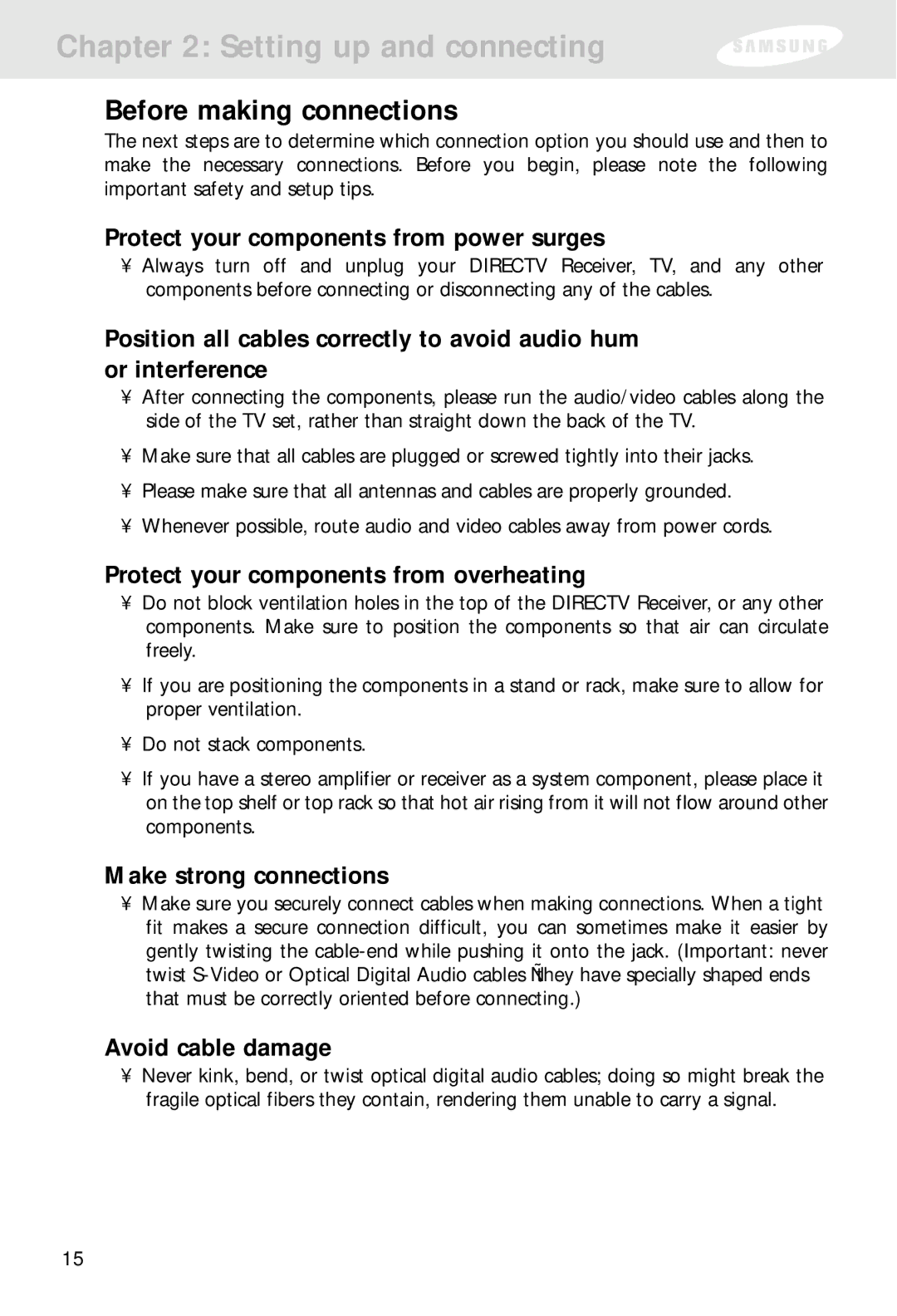
Chapter 2: Setting up and connecting
Before making connections
The next steps are to determine which connection option you should use and then to make the necessary connections. Before you begin, please note the following important safety and setup tips.
Protect your components from power surges
•Always turn off and unplug your DIRECTV Receiver, TV, and any other components before connecting or disconnecting any of the cables.
Position all cables correctly to avoid audio hum or interference
•After connecting the components, please run the audio/video cables along the side of the TV set, rather than straight down the back of the TV.
•Make sure that all cables are plugged or screwed tightly into their jacks.
•Please make sure that all antennas and cables are properly grounded.
•Whenever possible, route audio and video cables away from power cords.
Protect your components from overheating
•Do not block ventilation holes in the top of the DIRECTV Receiver, or any other components. Make sure to position the components so that air can circulate freely.
•If you are positioning the components in a stand or rack, make sure to allow for proper ventilation.
•Do not stack components.
•If you have a stereo amplifier or receiver as a system component, please place it on the top shelf or top rack so that hot air rising from it will not flow around other components.
Make strong connections
•Make sure you securely connect cables when making connections. When a tight fit makes a secure connection difficult, you can sometimes make it easier by gently twisting the
Avoid cable damage
•Never kink, bend, or twist optical digital audio cables; doing so might break the fragile optical fibers they contain, rendering them unable to carry a signal.
15
